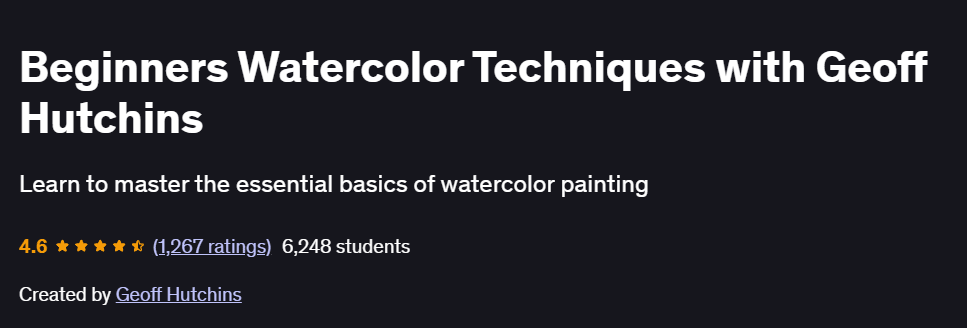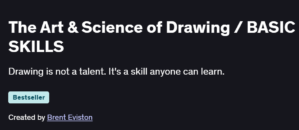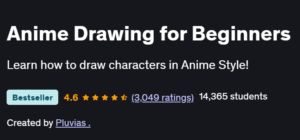What will you learn in Beginners Watercolor Techniques with Geoff Hutchins Course
Understand the fundamentals of watercolor materials: paints, brushes, and paper
Master key techniques such as wet-on-wet, wet-on-dry, glazing, and dry brush
Control color mixing, value gradations, and edge softness
Develop composition skills with washes, textures, and layering
Apply techniques to landscapes, florals, and simple still-life studies
Program Overview
Module 1: Introduction & Materials
⏳ 30 minutes
Topics: Choosing paint brands, paper weights, brush types, palette setup
Hands-on: Prepare a basic color wheel and test primary pigments
Module 2: Basic Washes & Gradients
⏳ 1 hour
Topics: Flat, graded, and variegated washes; water control
Hands-on: Paint smooth sky and gradient backgrounds
Module 3: Wet-on-Wet & Bloom Effects
⏳ 1 hour
Topics: Timing, pigment flow, creating soft edges and “flowers”
Hands-on: Execute a wet-on-wet floral petal and abstract bloom study
Module 4: Wet-on-Dry & Detail Work
⏳ 1 hour
Topics: Crisp edges, layering, glazing for depth
Hands-on: Add detailed stems, leaves, and small branches over dried washes
Module 5: Texture & Masking Techniques
⏳ 45 minutes
Topics: Salt effects, lifting, spattering, masking fluid basics
Hands-on: Create textured bark or stone effects using salt and lift
Module 6: Composition & Final Study
⏳ 1 hour
Topics: Thumbnail sketches, focal points, color harmony
Hands-on: Complete a small landscape or floral study incorporating learned techniques
Get certificate
Job Outlook
Watercolor skills enhance freelance illustration, greeting-card design, and art-therapy facilitation
Roles include Freelance Illustrator, Art Instructor, and Surface-Pattern Designer
Growing demand in handmade stationery, home decor prints, and online art workshops
Perfect for hobbyists aiming to monetize art or teach community classes
Specification: Beginners Watercolor Techniques with Geoff Hutchins
|
FAQs
- No prior experience is needed; the course is designed for complete beginners.
- Basic familiarity with colors and brushes can help but is not mandatory.
- Step-by-step exercises guide learners through foundational techniques.
- The course emphasizes hands-on practice to build confidence gradually.
- Learners develop essential skills for landscapes, florals, and simple still-life.
- Regular practice on small studies is recommended to reinforce techniques.
- Completing exercises like washes, wet-on-wet, and glazing enhances muscle memory.
- Practicing color mixing and value gradations outside class improves control.
- Trying different textures (salt, spattering) helps learners understand medium behavior.
- Documenting studies creates a personal reference library for future projects.
- Projects and exercises can form a beginner portfolio suitable for freelance illustration.
- Skills apply to greeting cards, small prints, and online art workshops.
- Capstone study encourages creative composition and presentation of work.
- Techniques learned can be adapted for commercial or personal projects.
- Portfolio pieces demonstrate foundational mastery for clients or employers.
- The course focuses on small studies and beginner-friendly exercises.
- Large-scale compositions and mixed media are not covered in detail.
- Learners can build on learned techniques to experiment independently.
- Exercises emphasize core skills like layering, glazing, and edge control.
- Additional tutorials or advanced courses can supplement large-format painting skills.
- Dedicate consistent weekly hours (2–5 hours) for hands-on practice.
- Focus on one technique per session to avoid overwhelming complexity.
- Keep a small sketchbook or paper pad for daily experimentation.
- Review previous exercises to reinforce skills and track progress.
- Share studies in online communities or with peers for feedback and motivation.





